Our bodies are incredibly efficient machines, performing literally thousands of tasks each day without our knowledge. When you take in nutrition, in the form of food, your body springs into action breaking everything down into its usable components, extracting the vitamins and minerals, converting the sugars into energy and energy stores, and utilizing the precious protein to repair and rebuild the tissues of our muscles, skin and organs.
We can sometimes forget how critically essential protein really is to our existence, but it can literally be found in every living cell in your body. Simply put: you can’t have life without protein.
Sadly, most of us have been conditioned to think that the primary source of protein in our diet should be animal tissue, but this couldn’t be further from the truth.
There are far better sources of protein for the health conscious individual, from a myriad of nuts and seeds to vast arrays of nutritious and delicious fruits and veggies.
Meat has probably been thought of as the mainstream source of protein for so long due to marketing and its widespread availability, but have you ever wondered if it is really the healthiest?
It is a good question to ask yourself when you consider that along with the approximately 40 grams of protein you will get from that 6 ounce porterhouse steak, you will also be ingesting a good 12 grams of saturated fat. That’s over 60 percent of your US Recommended Daily Allowance (RDA) of fat in just that one course, which is super dense!
But also, you may not be able to really absorb all of the protein from that steak that you think you are getting anyways. The Max Planck Institute in Germany showed that when animal protein is cooked, and it turns from pink to brown, the amino acids are damaged and denatured, and you may only be absorbing about 50% of the protein you think you are…with the rest having to be expelled as toxicity.
Switching to a ham steak to cut down on the fat content? Sounds good enough, until you factor in the 2,000 mg of sodium you will be taking in – 25% MORE than your healthy diet will allow.
This might be the perfect time to just stop a moment and ask yourself, “What else is this food choice going to do for my body?”

Animal protein does not supply dietary fiber to help keep your digestive tract healthy, clean, and functioning at its best, or any of the Omega 3s, antioxidants, or other vast range of thousands of micro-nutrients you can get from a plant-based diet.
Instead, you will be unnecessarily placing added stress on your body (especially on the detoxifying organs of your kidneys and liver), and forcing its pH levels into a more acidic range.
Red meat – or fatty meat – is one of the hardest things for us to digest. In order to break it down, your body will produce hydrochloric acid in greater and greater amounts. What happens after that is the undigested meat will then sit in the gut and begin to rot and putrefy. Nasty!
The increase in acid can cause all sorts of nasty things including chronic heartburn, acid reflux, and an elevated risk of digestive cancers and heart disease.
Increased acidity in the body will also have undesirable long term effects on the joints, and of course it will show in your skin as you begin to see more lines and wrinkles showing up before their time.
I don’t know about you, but that would certainly be enough to get me looking for alternatives!
Oddly, millions of people who suffer from these telltale symptoms will simply go to the drugstore, year after year, and buy something to neutralize the acid. I had to get a little acid reflux aid recently b/c it’s something I’m periodically experiencing through the pregnancy. It’s the first time I truly paid attention to that aisle… and wow was I shocked at the sheer numbers of products there are!!
Whaaat?!? This just blows my mind! The body is producing excessive amounts of acid in order to increase its ability to digest…
So instead of taking something to deal with what you are eating…what about the notion of changing up what you are actually eating?
But, I work out regularly, so don’t I need a higher protein diet?
Protein remains one of the most misunderstood macro-nutrients in the fitness industry. Athletes and intensely active individuals probably only need about 10 to 12 percent of their calories to come from protein to support muscle.
Too much protein — even for serious athletes — is actually much more common than too little.
For example, the RDA suggests .36 grams of protein per pound of body weight. Yet, many athletes and bodybuilders take it to the extreme with up to 2 grams per pound of body weight! Too much protein can be a serious problem. Most people don’t think protein can be overdone- but they are sorely wrong!
Unfortunately, when many athletes and fitness enthusiasts seek “high-quality protein,” they automatically assume this means protein from animal sources.
In fact, protein from animal sources is not necessarily the best for the human body to consume, especially every day, and moreover, multiple times a day, as we have seen.
The notion that training a lot means you need to get upwards of 30% or of your calories from animal protein is the perfect prescription for excess ammonia in the body, dehydration and acidity.
In addition, your body can only make use of a certain amount of protein, so when you take in too much, it is simply stored as fat and/or toxic, putrefied material (ie sludge), and you begin to gain weight.
So where should I look for high quality, clean burning protein?
In the plant world, vegetables, grains, nuts, legumes, and seeds all contain significant levels of high quality, clean burning proteins.
If you are concerned about getting adequate protein for athletic performance from a plant-based diet, then eat the following foods with confidence, knowing they are excellent, wholesome protein sources.
Clean Plant-Based Protein Sources
#1: Raw nuts and seeds
This includes hemp seeds, almonds, walnuts and pumpkin seeds…
This group of foods are protein powerhouses. Just consume these in moderation as a little goes a long way (and they are quite dense in fat as well).
While we are familiar with many of the different varieties of edible nut and seed, the hemp seed seems to be a little less mainstream. This is obviously because of its botanical relationship to Cannabis, but let me assure you that in this context, there is nothing but nutritional benefit to be considered.
This relatively obscure seed literally delivers every known amino acid in one neat little package, including the ones that our bodies cannot produce.
That in itself is a truly amazing claim, but combine it with an abundance of fiber, a rich array of vitamins, minerals, and natural healthy omega fats to support immune health and help you fight diabetes and cancers, and you have the makings of a powerful health and beauty food!
#2: Chia Seeds
I really think chia seeds are one of the best foods out there, and I eat them almost daily. One of my staple recipes is my Chia Seed Delight Recipe.
Chia seeds are a complete source of protein while also offering antioxidants, vitamins, and a variety of minerals such as calcium. Chia also supplies a rich plant-based source of omega-3 fatty acids.
They have replaced ground flax seeds as my daily seed. I love adding them to my Power Protein Smoothie for a long-burning, energizing and refreshing treat after a workout.
#3: Protein Powders
Protein bio-availability is the most important factor in deciding what type of protein supplement to use. With so many choices on a truly saturated market, it can be a bit confusing, so I get a lot of people asking me what the best choice really is.
I personally only recommend a high quality plant based supplement made from a variety of plant-based sources, at least some sprouted, like the kind Sunwarrior offers (You can use the code FEELGOOD to get 20% off at checkout at sunwarrior.com). I don’t recommend dairy-based choices (whey) or soy protein powders. Hemp protein and brown rice protein are also great choices.
TIP: Always look for non GMO, organic supplements!
Hemp has not been subjected to genetic modification. It is extraordinarily hardy, so it is not really necessary for farmers to spend their money on herbicides or pesticides (think: ‘easy to raise in a completely organic way’), making it is a wonderful, safe source of protein.
It also has a pleasantly nutty taste. By adding a small amount of ripe banana and cacao, you’ll be in for a tasty treat!
#4: Sprouted grains
Including buckwheat, oats, quinoa, and millet…
The list of benefits from adding sprouted grains to your diet seems to get longer and longer with each day. Although we are currently looking at the high quality, easily digested protein that they offer, I don’t want to overlook their other numerous wonderful attributes.
These grains are all rich in precious dietary fiber which most Westerners are chronically deficient in. Dietary fiber is essential to keeping the digestive tract clean and healthy while naturally lowering blood pressure and helping fight cancers.
Like buckwheat, quinoa provides us with antioxidants to help bolster the immune system and fight off the early signs of aging, in addition to being rich in vitamins A, E and the amino acids lysine and methionine. These amino acids make quinoa possibly the most complete source of quality protein in the grain world (even though it is not technically a grain, but that’s a story for another day).
What’s more, 100 gram serving of quinoa has less than half the fat of a similar serving of lean beef, but offers a higher quality, cleaner burning protein than can ever be gotten from any animal tissue.
#5: Vegetables
Including dark greens, mushrooms, peppers, and yams…
It is hard to overstate the value of dark, leafy greens in your diet plan. Greens have more valuable nutrients than any other food group on the planet.
You might be surprised to learn that greens even have high-quality, easily-assimilated amino acids – enough to build the protein that supports the muscle mass of the mighty, greens-eating gorilla, which pound-for-pound is the strongest animal on earth!
For many reasons, including this one I created the Glowing Green Smoothie® (GGS). It is the drink that I drink every day, and have all my clients drink to feel and look their best. I promise you won’t be sorry if you make it a part of your daily ritual as well! :) Many of you doing The 14-Day Glowing Green Smoothie Challenge this week will attest to that!
Mushrooms come in all shapes and sizes. Some have a rich, earthy taste, and some are more delicate and subtle, but all provide a host of nutrients when incorporated into your diet. Naturally low in fat, mushrooms are not only high in protein, vitamin D and folate, but are rich in fiber, minerals, and certain amino acids as well.
Yams are not only a great source of protein, offering roughly 2 gm per serving, but are also chock full of other powerful nutrients, like dietary fiber, healthy omega 3 and omega 6 fats, vitamins like A, C and folate, and minerals like phosphorous, magnesium, calcium and iron.
#6: Legumes
Beans and legumes of all kinds are a highly economical and widely available food choice that can really add dimension to any meal.
Like all foods that are high in fiber, they fill the stomach so you won’t find yourself getting hungry between meals. They are also great sources of calcium, iron, and yes, protein!
When eaten in combination with high protein whole grains like buckwheat, millet or quinoa, legumes can provide a balance of all of the essential amino acids needed by humans.
Many people avoid eating beans because they find that they get a gassy stomach afterwards. This is understandable, as beans can be difficult to digest, but don’t let this scare you away! Simply start out with a small serving of a milder bean, like mung bean, adzuki or dahl, and build up from there. I have recently shared a variety of recipes using mung beans and dahl that you can check out! Soak them overnight, which makes them easier to digest, and be sure to take digestive enzymes before eating them.
Also, make sure that you don’t consume any other sugars within 2 to 3 hours of eating beans, and avoid pairing them with potatoes in the same meal.
We are all very familiar with the benefits to gut health to be gotten from probiotics, as these support the our internal ecosystem by helping maintain a healthy balance of intestinal flora, but little attention is paid to foods that act as prebiotics, like oats and legumes.
These foods work with your probiotics to help promote a hospitable environment for the natural growth of healthy gut bacteria.
#7: Spirulina
Did you know? Spirulina contains 60 percent protein by weight and all the essential amino acids your body needs. It also provides twice as much protein as carbohydrates. Spirulina often gets misclassified as an herb, but it’s actually a bacteria, or a blue-green algae that’s found in pristine freshwater lakes, ponds, and rivers. It is most commonly recognized as a superfood as it offers health benefits to practically every organ and bodily function.
I think spirulina is so pretty! It can be an acquired taste, but with the right combination of ingredients, it will balance nicely.
A good company from a pure region in Hawaii to use for spirulina is Nutrex. If you use another brand, be sure that it’s certified organic, is tested to be free of heavy metals, stored in a container that does not allow light to enter, (the delicate antioxidants and essential fatty acids are light-sensitive!), and then store in a cool, dry place.
A standard daily dose of spirulina is 1-3 grams, You can try making my Spirulina Power Protein Smoothie as it balances the flavor or the spirulina nicely and makes it inviting to everyone!
When it comes to having a better performance spirulina can help! In a study, it was was shown to enhance endurance, significantly increasing the time it took for people to become fatigued. Certain plant foods like spirulina have antioxidant properties that can help athletes and physically active individuals minimize damage during their workouts.
Another study done on college athletes found that spirulina supplementation increased muscle strength.
So you see, when you are following a whole foods diet, as recommended in the Beauty Detox lifestyle, you can rest assured you are getting plenty of high quality plant-based protein (without having to obsess about tracking and counting every bite you eat). Stick to a wide variety of plant-based foods, and your body will do the math for you!
While it’s true that if you’re working out a lot, you probably do have different nutritional requirements than casual and non-athletes, that does not mean you can’t get all you need by living the Beauty Detox lifestyle .
In fact, what fitness-focused individuals most need is sufficient fuel for their activities.
Though they may have slightly higher protein requirements, all of these needs are met naturally with a healthy, plant-based diet.
See you back here soon! ‘Til then, take good care.
In love and health,
Kimberly


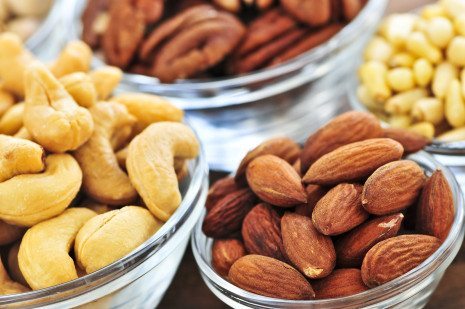
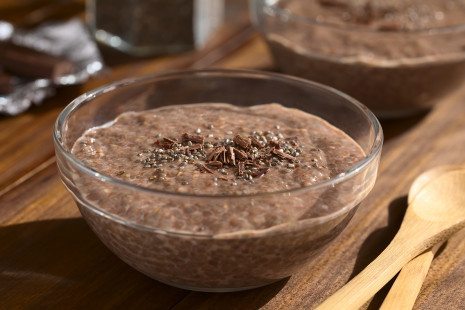
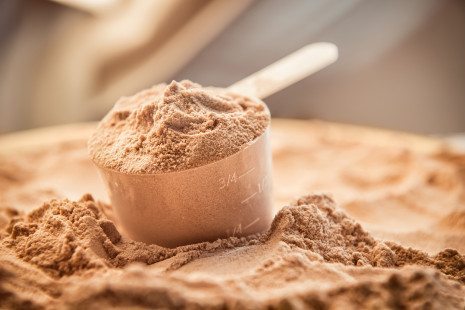
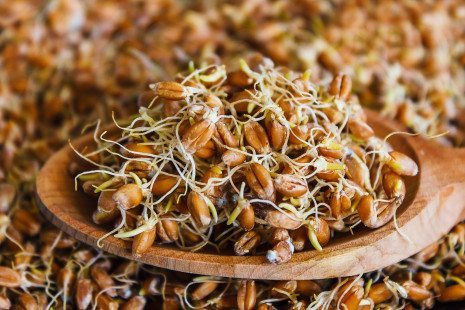
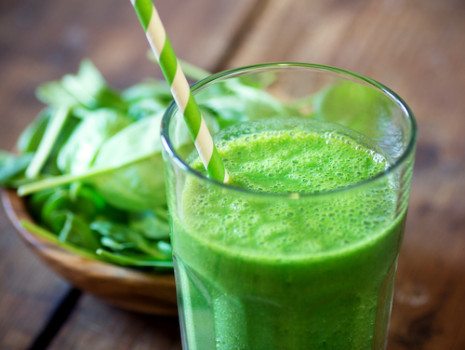
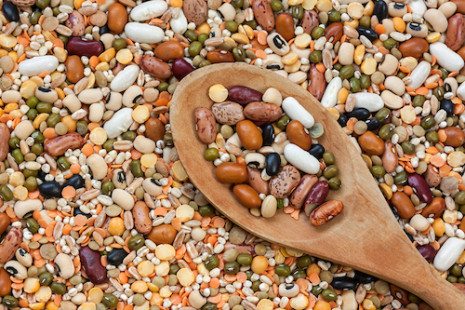


Actually I recently switched to Garden Of Life Raw Protein for my Smoothies. I was happy to see that Kimberly recommends, she is after all, my guru on these matters
Yes, it’s a real shame that hemp seeds are not so mainstream and have been stigmatized somewhat. I’m hoping that we can change that perception. Great post!
Thanks so much Russ!;)
Is it okay to use the raw protein powder in my smoothie everyday if I work out?
Hello Kimberly!
I was wondering if I can pair legumes with carbs?
I love your lifestyle (vegan + yoga). <3 Maybe you can write something about your yoga practice too?
Thank you!
Hi Michelle and thanks for your great question. Legumes (and beans) are a bit trickier because they contain both protein and starch, which in itself is an improper food combination. However, since they’re primarily considered a starch it’s suggested beans and legumes digest best when combined with vegetables and other starches, such as brown rice. Lots of love to you! ;)
Very informative. Thank you . could you ever post an article on how to stay plant-based when your husband and rest of the family is so strongly meat eating. And my husband does most of the cooking which sounds nice but it’s always meat.
Hi Tina and thanks for checking out this post. I totally understand the challenges when trying to eat plant-based with a partner/family that has other food interest. Here’s one podcast I recorded along these lines, How Can Families Make the Shift to a Plant-Based Diet: https://bit.ly/2mqEDNr. There are other articles you can find on my website, under Blogs, then Search Box then add keywords that your topic pertains to. Let me know what you think and if any of the tips work for you and your family. Sending you so much love and support! ;)